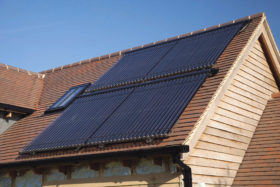
21st-22nd February 2026 - time to get your dream home started!
BOOK HERE
21st-22nd February 2026 - time to get your dream home started!
BOOK HEREOf all the self-build topics I get asked about, the most prevalent is exemptions from taxes and levies, such as Section 106 (S106) agreements and the Community Infrastructure Levy (CIL). The S106 issue was resolved in May when the high court restored the government’s advice that projects of 10 homes or fewer with a cumulative floor area of no more than 1,000m2 should not be liable.
CIL immunity for self-builders is enshrined in law. However, I’m continuing to hear incredible stories of individuals doing their best to claim the exemption yet still being hit with enormous fines for failing to follow bureaucratic processes or missing technical details. In some cases, the bills have exceeded £50,000 and have effectively killed the project dead.
It’s bewildering that omitting a piece of paper, or getting over-enthusiastic and digging a hole without permission, can result in such eye-watering fees. The penalties are lacking in proportion to the wrongdoing committed and, in my opinion, are nothing short of scandalous.
Here’s what is supposed to happen. Upon making a planning application, you would advise your local authority prior to the commencement of development that you’re a self-builder and that you’re seeking to claim exemption from CIL. This is done by submitting part one of the Self-Build Exemption Claim Form, known as Form 7, which can be downloaded from the Planning Portal (www.planningportal.org.uk).
It’s a fairly simple document comprising details of your scheme and the plot, together with a simple declaration that you are a self-builder. Your local authority will advise whether or not it can grant CIL relief. Part two of this paperwork is submitted within six months of completion, along with proof of your self-build status (usually your VAT reclaim or mortgage details) and a declaration that if you sell within three years of completion, you will be liable to pay CIL.
There is a third document, Form 6, which serves as the commencement notice. If this isn’t submitted after you’ve received a decision on whether or not your local authority will grant relief from CIL, and before you begin any work on site – even digging a hole – then you will get hit by the levy.
It’s this part of the process that’s causing much of the grief. Another potential trap is people submitting details but in the wrong format, such as sending information via email rather than using the Planning Portal forms.
My view is that a project is a self-build or it isn’t. If CIL is due, then it must be paid. If it’s a self-build then CIL doesn’t apply – and that should be it. I don’t think it’s right to pounce and claim fees of tens of thousands of pounds based on a technicality or as the result of a legitimate oversight.
The powers that be will claim the rules are fair and, if followed to the letter, nobody should be penalised. That’s true, but we’re all fallible and minor lapses in the process shouldn’t lead to such disproportionate penalties.


It is such a shame that CIL can be so cripplingly high: in the borough of Wokingham, for example, they want £365/m2, applied at a blanket rate across the entire borough, irrespective of the land value or the final value of the property or the fact that small self-builders, builders and developers face a quite different cost structure and do not have the economies of scale of large builders. We have the stupid situation in Reading that £150/m2 is applied by Reading BV and South Oxfordshire DC, but if you happen to cross the border into the suburbs of Shinfield or Earley or Woodley, builders are crucified with £365/m2.
Feel sick to the stomach. feel angry, upset and totally deflated.
Applied for CIL exemption it was granted. Sent off form 6 to local authority on June 5th. Building commenced on June the 14th. Got a letter on June 20th stating local authority asking for CILform 6. Said we had posted it. They reply the have not received it so 19K to pay this week. We don’t have that kind of money. our bridging load has yet to come through and have to pay builder !st stage. Its so unfair where’s the justice we have done everything that was required. They say their is no way out we have to pay the 19K what the hell? HELP is needed please.
Hi stable,
Please could you email us at buildit[at]castlemedia.co.uk to let us know a bit more about your experience applying for CIL exemption (including the local authority to which you refer).
Thanks,
Andrew (Build It’s Digital Assistant Editor)
I’m just about to be stung with this to the tune of £80K. I started a long winded process of an extensions that was originally exempt from CIL based on the additional floor space, however during construction, the quality of the walls and remaining roof were so bad we were left with little more than a 1/5 of the original building standing. We progressed to rebuilding the walls to modern standards and keeping to the same approved (elevations and floor print) plans. Roll on a visit from planning, who decided that we had strayed into new build territory and that we must submit a retrospective new build application. Before we agreed to this, i asked our case office at Mole Valley, is there anything we need to worry about, any charges we can be hit with, his answer ” no it’s just a formality”.
So here we are now with the local authority stating we can’t claim relief as work has already commenced and that CIL is not their issue , rules are rules!
It’s absolutely sickening. This was supposed to be our family home, but now, no house, no money and two exceptionally large debts to pay or go bankrupt!
DPR this exact same thing has happened to us by Mole Valley. I feel they are purposely entrapping people to pay the CIL.
We had plans approved and were granted an exemption. We did everything right and sent a commencement notice etc. However our neighbour complained that the roof was slightly higher (it turns out by 30cm) so we got an email from Mole Valley telling us to apply for retrospective planning permission. As your situation, they made it sound like this was our only option and put the pressure on by saying if we did not do it within 7 days they would commence enforcement action.
Our architect followed their advice and submitted full retrospective planning for the whole building with the new roof height. Despite already having approval for the full build with a slightly lower roof. We were then sent a CIL notice for 30k with no option for exemption.
Not only could we have submitted a s73 application or a retrospective application for just the roof, which would have attracted a considerably lower levy, but the application we did submit was effectively inaccurate and invalid because it covered works we already had approval for and they can’t approve the same works twice. However, the council knew this and inspected but rather than reject the new application and ask us to change it they granted it knowing fine well that this would happen.
We are a young couple creating a family home and clearly do not have this money. We honestly feel like this person at Mole Valley is trying to entrap people like you and me which effectively ruins their lives. There were other options available to us and they could have advised this.
Having read this it is clearly an issue at Mole Valley.
If anyone can help us we are desperate. This is effecting our health and well-being and we just don’t know what to do. Please help us!